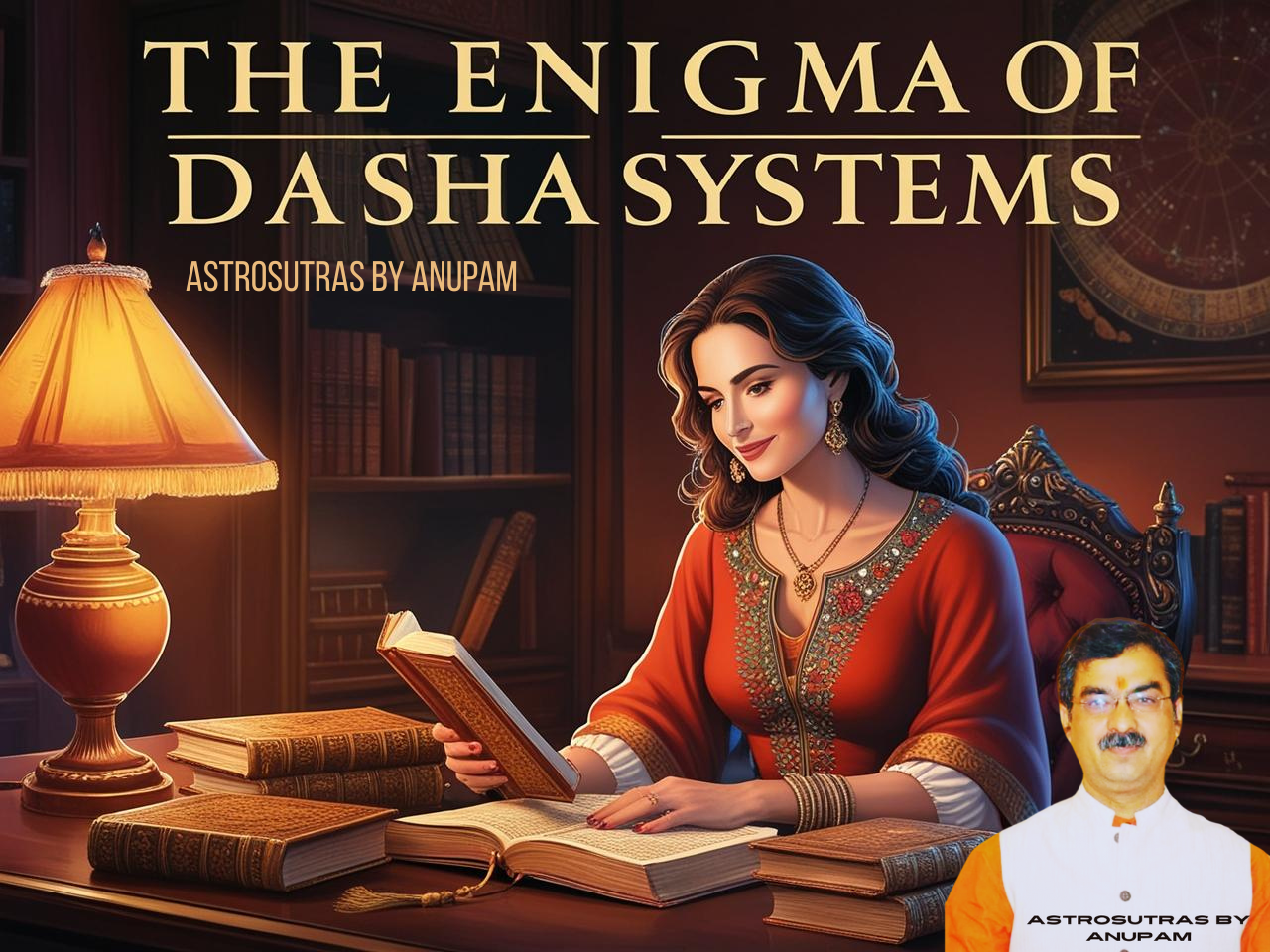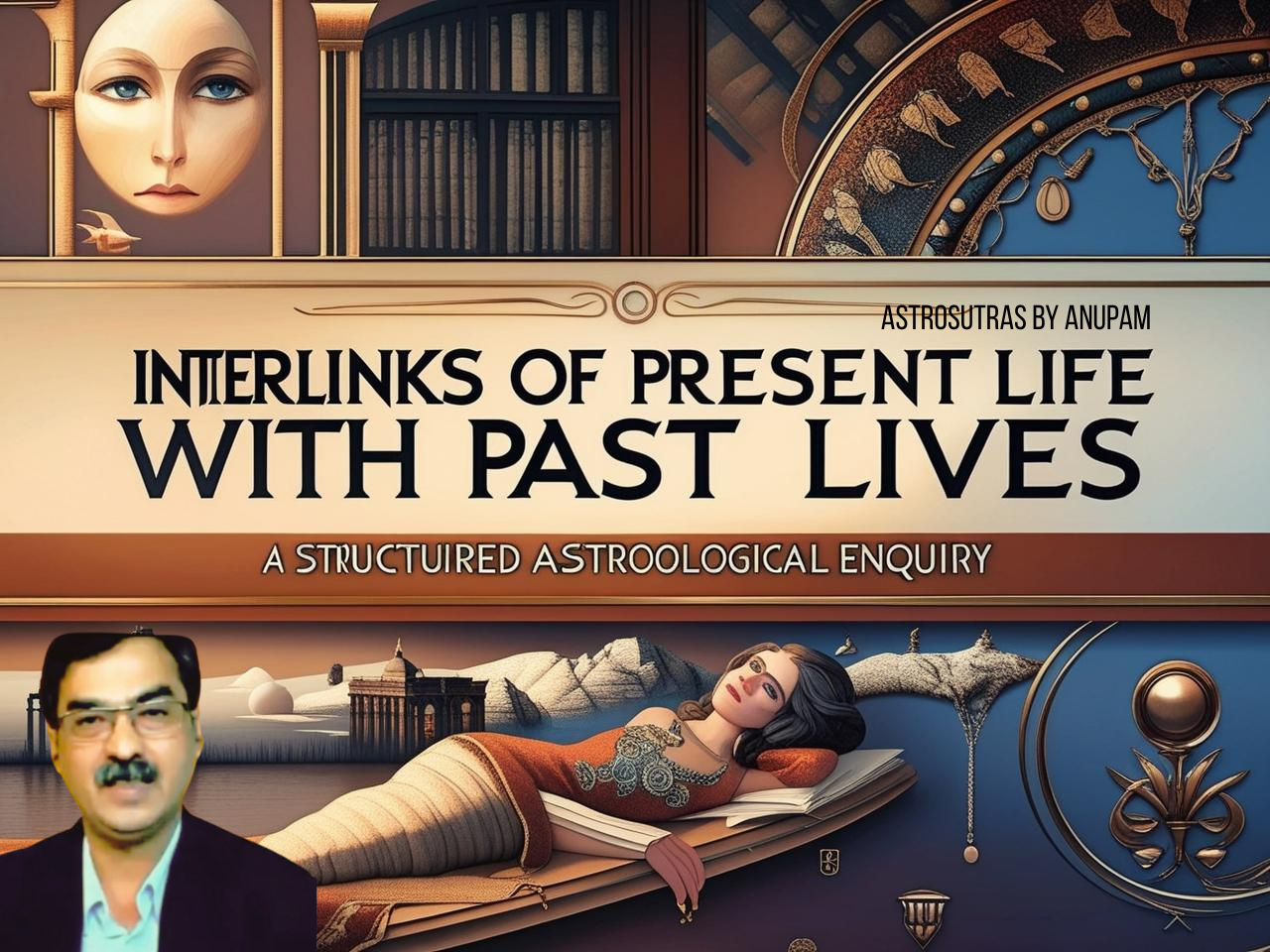The Enigma of Dasha Systems: Static Promises and the Dynamic Framework of Experience in Vedic Astrology

Astrology, particularly the Vedic tradition, stands as one of the most profound models of predictive science developed through centuries of observation, intuition, and spiritual insight. At the heart of Vedic astrology lies the dynamic interplay between the static promises embedded in a natal chart and the dynamic mechanisms that activate or actualize those promises across the span of human life. Among the most critical of these dynamic mechanisms is the Dasha system—a unique method for timing events that unfolds across planetary periods.
Today, I propose to initiate a deeper academic discussion on this Dasha system, its theoretical basis, structural design, and more importantly, its philosophical and practical implications for accurate prediction. The aim is not merely to recount existing doctrines, but to open a serious debate on whether our understanding of Dasha systems—especially in the modern era—is superficial, and whether the traditional models are being applied with the necessary depth and caution.
The Dasha Landscape: A Multilayered Framework
In core Vedic astrology, multiple Dasha systems exist, each operating on a specific logic and tailored to serve either general or particular aspects of life. These systems are broadly classified into three categories:
- Special Dashas (e.g., Yogini Dasha, Chara Dasha)
- Rashi-based Dashas (e.g., Chara Dasha, Mandook Dasha)
- Nakshatra-based Dashas (e.g., Vimshottari, Ashtottari, Kalachakra Dasha)
The Parashari system, widely considered foundational in classical Vedic astrology, leans heavily on Nakshatra-based dashas, especially the Vimshottari Dasha, for timing the fruition of karmic results. On the other hand, the Jaimini school, equally sophisticated and subtle, utilizes Rashi Dashas like Chara and Sthira to predict specific events based on the movement of signs rather than Nakshatras or planets.
Further still, the Tajika system—a powerful tradition primarily concerned with annual predictions or Varshaphala—employs its own Dasha frameworks such as Mudda and Yogas for granular timing within a single year. Thus, astrologers today inherit a rich but complicated heritage of time-measuring tools, each layered with its own logic, rules of operation, and spheres of influence.
The Duality of Life in Astrology: Static vs. Dynamic
In astrological theory, the life of a native can be divided into two interrelated but functionally distinct domains:
- The Static Chart (Natal Chart or D1): Also known as Jataka, this chart provides the blueprint of one’s karmic inheritance. It encodes the promises and probabilities in different spheres of life through Bhava (houses), Bhavesh (house lords), and accompanying systems such as Shadbala, Avasthas, and Vargas (Divisional Charts).
- The Dynamic Chart (Time Activation Mechanism): This includes Dasha and Transit (Gochar) systems, which define the when and how of experiencing the latent promises encoded in the natal chart.
The core concern here is that while the natal chart may have clear signals—say, a strong 10th house indicating career success—these are only potentialities. Their manifestation in real time depends on dynamic triggers, and among them, the Dasha system holds a position of paramount importance.
Static Promise and Its Activation: A Philosophical Concern
A fundamental question arises at this juncture: Is every promise in the natal chart meant to be experienced in life? The answer, guided by the teachings of AstroMaster U.K. Jha, leans toward cautious skepticism. Not all promises bear fruit unless supported by the environmental conditioning brought about by the Dasha system and transit.
Herein lies the hidden complexity of the Dasha: it is not merely a time span, but a field of activation, where planetary energies orchestrate conditions—internally and externally—that either support or suppress the actualization of a promise. In other words, Dashas are not just calendars of fate but codes of conditional manifestation.
AstroMaster U.K. Jha has often objected to the popular practice of beginning analysis with the running Dasha in search of an event. He insists that one must first identify the core promise in the natal chart and only then proceed to time it through an appropriate Dasha system. Without this sequence, one is likely to chase illusions in the name of prediction.
The Mystery of Multiplicity: Why Do Dashas Differ?
A question frequently faced by serious students is: Why do different Dasha systems yield different predictions for the same chart? The explanation can be found in several areas:
- Differing Time Spans (Dasha Avadhi): For example, Vimshottari assigns 20 years to Venus, while Yogini assigns only 7 years. Clearly, the window of probability is compressed or expanded depending on the system.
- Different Basis of Computation: Nakshatra Dashas are based on lunar constellations, whereas Rashi Dashas are computed based on the signs. Their triggers and focus areas differ fundamentally.
- Balance Dasha (Dasha Prarambh): The starting point of the Dasha cycle is based on the precise Moon position or other point of initiation theories for computations at birth, making it unique for each native and influencing the unfolding sequence.
Thus, the Dasha system too is layered—not just a straight-line reading but a rotational field of karmic energies, spiraling through time, each layer evoking different conditions and results. These layers are not apparent at first glance and require an understanding of interplanetary relations, dispositorships, yogas, and varga involvement.
Towards a Deeper Pedagogy: Who is Teaching the Real Secrets?
A disturbing reality in today’s commercialized and fast-paced astrological environment is that most teaching focuses on surface-level application of Dashas. Aspiring astrologers are often discouraged from deeply examining the D1 chart or Bhava-Bhavesh relations, being pushed instead towards “astro-aerobics” in divisional charts or shadbala tables—often with the dangerous assumption that divine control will cover interpretive gaps.
This attitude neglects the layered intelligence embedded in the static chart and the multi-dimensional character of Dashas. The pressing question then becomes: Who is teaching the real secrets of astrology in the modern era? Where are the mentors who approach Dasha not as a predictive toy but as a spiritual and psychological code?
Astrology is not just a science of events—it is a science of conscious evolution through timed experience. And to decode that experience, both the static promise and the dynamic dasha mechanism must be understood not just logically but spiritually.
Conclusion and Way Forward
The debate on Dasha systems is far from over. In fact, it is only beginning. What we currently understand about planetary periods is merely the tip of the iceberg. The real architecture lies in understanding the inner logic of karma, the astral field of timing, and the philosophical bridge between static design and dynamic execution.
To move forward, we need a curriculum, a method, and a tradition that does justice to the genius of the rishis who coded these systems. And perhaps most importantly, we need to reclaim the forgotten humility and depth with which the ancients approached time and destiny—not as a market of predictions, but as a sacred map of self-realization.
To be continued…

